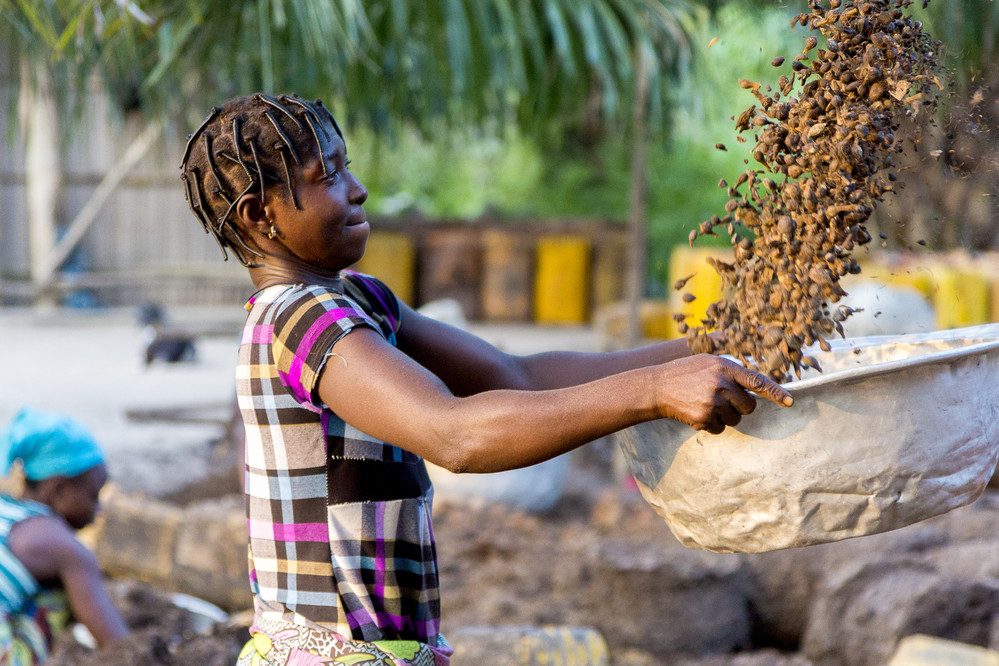Climate change and social inequality are two of the greatest challenges facing the world today. As we invest in our planet, the onus is upon us to ensure the flows of climate finance and corresponding policies don’t further widen inequality and erode economic justice.
__________
The world is facing mission-critical gaps in climate finance and development finance. Last month, the Intergovernmental Panel on Climate Change (IPCC) concluded that investment in climate mitigation and adaptation is three to six times lower than it needs to be to reach the goal of limiting global warming to 1.5 degrees Celsius. Meanwhile, the UN estimates that achieving the Sustainable Development Goals (SDGs) by 2030 requires $5-7 trillion in funding annually, with the estimated annual shortfall in SDG finance in developing countries standing at $3.9 trillion. As the world mobilises to address this shortfall, climate arguably needs to be a component of all SDG finance.
Yet simply deploying more climate finance will not hit the mark. Yes, the past two decades have seen a sustained upswing in capital flowing towards the climate transition. And global flows of climate finance almost doubled from $364 billion in 2011 to $665 billion in 2020, and reached an estimated $850 billion in 2021. However, avoiding the worst effects of climate change will require not only a many-fold increase in climate finance, but also ensuring that investments prioritise equity and just transition principles. This means ensuring that the benefits of greening the economy are shared widely, creating favourable working environments, and supporting those who might stand to lose out economically during the climate transition.
Climate finance is logically associated with SDG 13, but it is inextricably linked to all the SDG goals. It has a crucial role to play in reducing global inequalities, which have worsened in recent years and are estimated to be as great today as they were in the early twentieth century. For example, climate finance seeks to make food systems more resilient to climate impacts, contributing to SDG 2 on Zero Hunger. Likewise, climate finance flows are rapidly accelerating progress on SDG 7, ensuring greater global access to affordable and clean energy. But ensuring that this rising green tide lifts all boats will require intentional and intersectional lenses that consider geographical, demographic, historical and socio-cultural determinants of economic vulnerability.
Mobilising capital allocation towards emerging markets and developing countries is key to the paradigm shift
According to academic research commissioned by the governments of UK and Egypt, annual investments in emerging markets and developing countries excluding China should exceed $2 trillion by 2030, to cut emissions, deal with natural disasters, and restore extenuating damages already expected due to climate change. While climate finance is reaching historic highs, it is not flowing proportionately to the regions in greatest need. Climate finance from developed countries for developing countries increased from $52.4 billion in 2013 to $83.3 billion in 2020, short of the $100 billion target. In short, the emerging markets and developing economies which house approximately 80% of the world’s population are only receiving an estimated 10-25% of climate finance flows. Yet this is emblematic of broader capital market flows, which are largely underweight in terms of emerging markets and developing economies.
In 2021, official development assistance from donor countries stood at $186 billion, a long way off from the trillions needed, even if all of this funding were to address climate change. However, capital markets circulate an estimated $100 trillion globally, and within these markets, environmental, social, and governance (ESG) assets have demonstrated the strongest growth in uptake. Of course, capturing these institutional capital flows requires strategies outside of the normal paradigm for reaching the SDGs. Over 80% of institutional investment is allocated to public markets and very few impact investors or development financial institutions (DFIs) are focusing on initial public offerings (IPOs) or exchange traded funds (ETFs).
This has begun to shift with the launch of the UK government MOBILIST programme, which aims to mobilise institutional capital by investing in listed sustainable propositions that also advance the SDGs in emerging markets and developing economies. MOBILIST invests equity into sustainable propositions and supports them with technical assistance to list on public markets, which offer the governance, transparency, and liquidity requirements to capture institutional capital at scale. With £156 million committed to the programme, 70% of MOBILIST investments are made to integrate climate finance, with the hope that this can gradually convert into billions in terms of co-investment, secondary raises and, more importantly, a broader array of emerging and frontier market-focused propositions listing and capturing institutional capital at scale.
We must consider socio-economic and cultural barriers in-country to ensure climate finance reaches the most vulnerable
The impacts of climate change are not felt equally, and a just transition equally demands financing that is sensitive to inequalities within countries. For example, over 70% of the poorest in developing countries are based in rural communities. And these communities are also the most vulnerable to natural disasters, due to far more limited infrastructure and health care systems, as well as greater reliance on agricultural livelihoods. In addition, women commonly face higher risks and greater burdens from the impacts of climate change. Historically marginalised or socially excluded groups are, across countries, more likely to face higher risks to quality air, water, food production and critical infrastructure, which increases their vulnerability to climate change. Without this important lens, climate finance can itself worsen racial, gender, spatial and socioeconomic inequalities.
Among several sectors that will ensure the Net Zero transition integrates the most vulnerable, few are more important than agriculture and food systems. Building resilience in these systems and supporting climate adaptation is key to ensuring the Net Zero transition has positive cross-cutting impacts, beyond climate change mitigation. Not only do these sectors generate about a quarter of greenhouse gases, they are also critical to rural economies and, in many countries, a primary livelihood for local communities. In many cases, green innovations from industrialised countries can price out low-income consumers, so it is really important to have endogenous ideas and business models. The Cargill-funded Land Innovation Fund is an example of investing in endogenous low-carbon and deforestation-free agricultural innovations, while working intentionally to ensure these solutions integrate and/or are driven by rural producers and other relevant local stakeholders.
Blended finance and catalytic capital will enable breadth and depth of coverage and impact
Stakeholders in financial markets are increasingly aware of the need, and the advantages, of pursuing a just transition to a green economy. Prominent among these initiatives are the Just Energy Transition Partnerships, which are helping a selection of heavily coal-dependent emerging economies make a just energy transition. In another key example, the Just Transition Finance Challenge, supported by the Impact Investing Institute and the City of London Corporation, will help to provide visibility and mobilise capital towards investments that advance a just transition. However, ensuring commercially viable climate finance products take consideration of the spatial, demographic, socio-cultural, and industrial factors (among others) that foment asymmetries in climate devastation is an expensive undertaking. Likewise, many of the business models that offer climate-friendly solutions to economically vulnerable groups have not yet found a way to be commercially viable and reach scale.
Blended finance will be one of the most important mechanisms to enable climate finance to reach these hard-to-reach places. And specifically, catalytic capital can take risks to ensure that the climate finance ecosystem can test, refine, and scale business models that are critical for a just transition. The USAID Climate Finance for Development Accelerator (CFDA) is a promising USAID-supported $250 million global vehicle that leverages a variety of catalytic mechanisms to crowd in $2.5 billion private and public capital. In leveraging donor funds, the Accelerator is taking needed risks to support blue carbon project development, enable gender lens climate finance, and reach financially under-served regions with green banking, among other propositions.
As is clear from CFDA and the other examples mentioned, enabling a transition to the Net Zero economy is highly reliant on donors stepping up with ambitious approaches. More importantly, success will depend on cross-sector partnerships that consider both commercial viability and long-term public good, scale and endogeneity, climate innovation and inclusive development.
This blog article is the first in a new series by Chemonics UK on the just transition. Future editions will offer new and emerging perspectives to support dialogue and innovation around this theme.
Posts on the blog represent the views of the authors and do not necessarily represent the views of Chemonics.
This article was originally published by Chemonics

